Totalitarian The Evil Men Do: Why 100 Million People Died. Totalitarianism represents one of the most extreme forms of government, where the state exerts total control over every aspect of public and private life. This article delves into the dynamics of totalitarianism, examining the psychological underpinnings of the rulers and the populace, and how these regimes manage to maintain power. We’ll explore historical and contemporary examples, the characteristics of totalitarian dictators, and the unique blend of fear, propaganda, and coercion that sustains these systems.
Key Takeaways:
Psychological and Sociopolitical Mechanisms of Totalitarianism: Totalitarian regimes maintain control through a combination of fear, propaganda, and economic dependency. Dictators leverage psychological traits like narcissism, paranoia, and charisma to establish and maintain absolute power, while also utilizing systematic repression and extensive propaganda to manipulate and dominate their populations.
Historical and Contemporary Examples: The article highlights both well-known and lesser-known examples of totalitarian regimes, illustrating how leaders like Adolf Hitler, Joseph Stalin, and Mao Zedong, along with Enver Hoxha, Nicolae Ceaușescu, Mengistu Haile Mariam, and François Duvalier, utilized brutal tactics to enforce their rule. These regimes led to the deaths of millions through political purges, famines, forced labor, and systematic persecution.
Role of Social Rewards: Totalitarian regimes often use social rewards to incentivize loyalty and compliance among citizens. These rewards include professional advancement, access to scarce resources, educational opportunities, and social recognition, which create a class of privileged individuals who have a vested interest in maintaining the regime’s power and policies. This system of incentives helps to reinforce and perpetuate the regime’s control over society.
Table of Contents
- The Fundamentals of Totalitarianism
- The Persona of Totalitarian Rulers
- Why People Follow Totalitarian Leaders
- Social Rewards
- Historical Examples of Totalitarian Regimes
- Lesser-Known Examples of Totalitarian Regimes
- Current Totalitarianism in the United States?
- How Countries Can Be Both Authoritarian and Totalitarian
- The Devastating Legacy of Seven Totalitarian Leaders
- Conclusion
- Frequently Asked Questions
- What are the main characteristics of totalitarian regimes?
- How do totalitarian rulers maintain power?
- Can totalitarianism exist in democratic countries?
- What are some historical examples of totalitarian regimes?
- What is the difference between authoritarianism and totalitarianism?
- Are there any totalitarian regimes today?
- External References
The Fundamentals of Totalitarianism
Defining Totalitarianism
Totalitarianism is a political system in which the state recognizes no limits to its authority and seeks to regulate every aspect of public and private life wherever feasible. Unlike authoritarian regimes, which seek primarily to maintain political power, totalitarian regimes aim to control the thoughts, beliefs, and actions of their populace.
Characteristics of Totalitarian Regimes
Totalitarian regimes are marked by several distinctive features:
- Absolute Power: Centralized control under a single party or leader.
- Ideological Monopoly: A dominant ideology that pervades all aspects of life.
- Controlled Economy: State-directed economic policies.
- Use of Terror and Violence: Systematic use of state violence to eliminate opposition.
- Propaganda and Censorship: Extensive use of media to control information and manipulate public perception.
The Persona of Totalitarian Rulers
Psychological Profile of Totalitarian Dictators
Totalitarian dictators often exhibit certain psychological traits that facilitate their rise and maintenance of power:
- Narcissism: An inflated sense of self-importance and entitlement.
- Paranoia: An obsession with potential threats and conspiracies.
- Charisma: The ability to inspire and mobilize the masses.
- Machiavellianism: Cunning, strategic manipulation for political gain.
Case Studies: Totalitarian Dictators
Adolf Hitler (Nazi Germany)
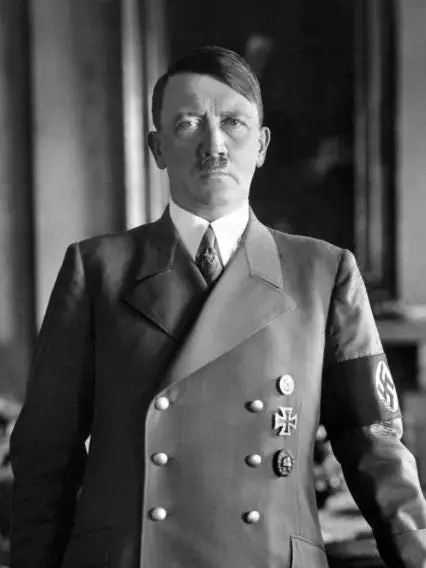
Adolf Hitler is responsible for an estimated 17 million deaths during his rule. This includes approximately 6 million Jews who were systematically exterminated during the Holocaust, along with millions of others including Soviet prisoners of war, Polish and Soviet civilians, Romani people, disabled individuals, political dissidents, and other groups targeted by the Nazi regime.
Adolf Hitler’s rise to power in Nazi Germany is a quintessential example of totalitarianism. Hitler combined charismatic oratory with a brutal police state to enforce his ideology, culminating in the systematic genocide of millions during the Holocaust.
Joseph Stalin (Soviet Union)
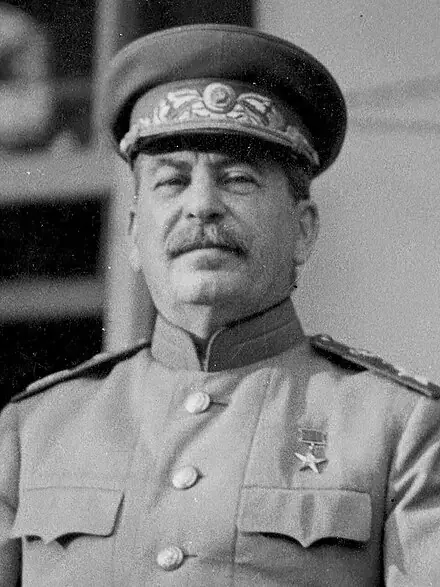
Joseph Stalin is responsible for an estimated 20 to 25 million deaths. This includes deaths from state-induced famine, such as the Holodomor in Ukraine, forced labor camps (Gulags), purges, executions, and other forms of political repression during his rule from the 1920s to 1953.
Joseph Stalin’s rule in the Soviet Union was characterized by intense paranoia and the Great Purge, where millions were executed or sent to Gulags. Stalin’s regime exemplified the terror and absolute control central to totalitarian governance.
Why People Follow Totalitarian Leaders
Psychological Mechanisms
Fear and Repression
The primary tool of totalitarian regimes is fear. By employing secret police, surveillance, and brutal punishment for dissent, these regimes create a climate of fear that stifles opposition.
Propaganda and Ideological Indoctrination
Totalitarian regimes use propaganda to create a unified narrative that justifies the regime’s actions and policies. This is often achieved through state-controlled media, education systems, and public rallies.
Social Identity and Group Cohesion
Humans have an inherent need to belong to a group. Totalitarian regimes exploit this by creating a strong sense of national identity and demonizing outsiders. This fosters in-group loyalty and out-group hostility.
Economic and Social Factors
Economic Dependency
Totalitarian regimes often control the economy, making citizens dependent on the state for employment, housing, and food. This dependency discourages dissent, as individuals fear losing their livelihoods.
Social Rewards
Totalitarian regimes often use social rewards to incentivize loyalty and compliance among the populace. These rewards can vary but generally aim to create a class of privileged citizens who benefit directly from the regime’s policies and thus have a vested interest in maintaining the status quo. Here are four detailed examples of social rewards provided by totalitarian regimes:
Professional Advancement
In totalitarian states, loyalty to the regime can lead to significant professional benefits. For instance, in Nazi Germany, membership in the Nazi Party or its affiliated organizations often resulted in preferential treatment in job placements, promotions, and professional recognition.
Teachers, doctors, engineers, and other professionals who showed unwavering support for Nazi ideology could expect career advancement, better pay, and more prestigious positions. This created a strong incentive for individuals to demonstrate their loyalty and propagate the regime’s ideology within their professional spheres.
Access to Scarce Resources
Totalitarian regimes control access to resources and can distribute them as rewards for loyalty. In Stalin’s Soviet Union, the government-controlled food distribution, housing, and consumer goods. Party members and those who actively supported the regime often received better quality housing, more food rations, and access to luxury items that were otherwise unavailable to the general population. This preferential treatment ensured that key supporters remained loyal and dependent on the regime for their improved standard of living.
Educational Opportunities
Education is another area where totalitarian regimes offer rewards to loyal citizens. In Maoist China, children of Communist Party members and those who demonstrated strong ideological commitment were given priority for educational opportunities.
This included access to prestigious schools and universities, scholarships, and opportunities for study abroad. These educational privileges ensured that the next generation of loyalists was well-educated and positioned to take up key roles within the regime’s bureaucracy and leadership.
Social Recognition and Prestige
Public recognition and prestige are powerful incentives in totalitarian states. In North Korea, loyal citizens are often publicly honored with awards, titles, and positions in state ceremonies. The regime grants titles such as “Hero of Labor” or “People’s Artist” to individuals who demonstrate exceptional loyalty or contribution to the state.
These titles come with privileges such as better housing, higher salaries, and greater social status. The desire for recognition and the associated material benefits encourage individuals to conform and compete for the regime’s
Historical Examples of Totalitarian Regimes
Nazi Germany
Nazi Germany, under Adolf Hitler, is one of the most studied examples of totalitarianism. Hitler’s rise to power was marked by the use of propaganda and the exploitation of economic woes and nationalistic fervor following World War I. Once in power, the Nazi regime quickly established a totalitarian state by consolidating power through the Reichstag Fire Decree and the Enabling Act, which allowed Hitler to legislate without parliamentary consent.
The regime’s control extended into every aspect of German life, from media to education, enforcing strict conformity to Nazi ideology. The Gestapo, or secret police, were instrumental in rooting out opposition and enforcing loyalty through fear. The regime’s policies culminated in the systematic genocide of millions during the Holocaust, where Jews, Romani people, political dissidents, and other marginalized groups were brutally exterminated in concentration and extermination camps.
Soviet Union Under Stalin
Stalin’s Soviet Union was marked by extensive purges, forced collectivization, and a pervasive cult of personality. Stalin’s rule transformed the USSR into a totalitarian state where dissent was met with severe punishment. The Great Purge, also known as the Great Terror, saw the execution and imprisonment of millions, including party officials, military leaders, and ordinary citizens accused of being “enemies of the people.”
Stalin implemented a command economy with the Five-Year Plans, aiming to rapidly industrialize the Soviet Union. However, forced collectivization of agriculture led to widespread famine, particularly the Holodomor in Ukraine, which caused millions of deaths. Stalin’s regime controlled all information through state media, education, and the arts, ensuring that only communist ideology was promoted.
Maoist China
Mao Zedong’s China exhibited many totalitarian characteristics, especially during the Cultural Revolution. Mao aimed to solidify his control and eliminate any opposition within the Communist Party and broader society. The Cultural Revolution mobilized young people into the Red Guards, who attacked intellectuals, destroyed cultural artifacts, and persecuted perceived enemies of the state.
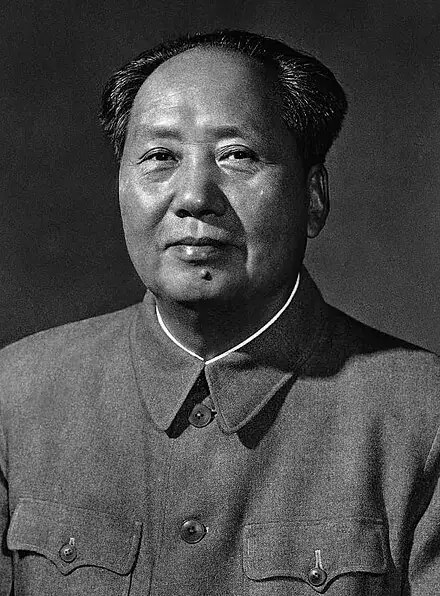
Mao Zedong is regarded as one of the most influential figures of the 20th century. However, his policies led to widespread suffering and death, with estimates of fatalities ranging from 40 to 80 million due to starvation, persecution, forced labor, and mass executions.
This period saw widespread violence, purges, and social upheaval, as traditional customs and institutions were dismantled. The Great Leap Forward, another of Mao’s policies, sought to rapidly transform China from an agrarian society into a socialist society through rapid industrialization and collectivization. However, this led to one of the deadliest famines in human history, with an estimated 15 to 45 million deaths. Mao’s cult of personality ensured that his ideology dominated all aspects of life, from education to media and public discourse.
North Korea
North Korea remains one of the few contemporary totalitarian states. The Kim dynasty has maintained strict control over the populace through propaganda, surveillance, and an omnipresent security apparatus. Kim Il-sung, the founding leader, established a regime characterized by a cult of personality, where he was depicted as an infallible leader. This legacy continued with his son, Kim Jong-il, and grandson, Kim Jong-un.
The regime uses the Korean Workers’ Party to enforce ideological conformity and punishes dissent with imprisonment, forced labor, and execution. The state’s control extends to every aspect of life, including strict regulation of the economy, education, and media.
North Korea’s extensive propaganda machine glorifies the ruling Kim family and demonizes perceived enemies, both domestic and foreign. The regime’s isolationist policies and focus on military strength have resulted in severe economic hardship and human rights abuses for its citizens.
Lesser-Known Examples of Totalitarian Regimes
Enver Hoxha’s Albania
From 1946 to 1985, Enver Hoxha ruled Albania with an iron fist. His regime isolated Albania from both the Western and Eastern blocs, creating an autarkic state with extreme levels of self-reliance. Hoxha implemented Stalinist economic policies, which included forced collectivization and industrialization.
Enver Hoxha, the totalitarian leader of Albania from 1946 to 1985, is responsible for the deaths of an estimated 5,000 to 25,000 people. This includes political executions, deaths in forced labor camps, and those who died due to the harsh conditions and policies of his regime. While the exact number is difficult to determine, Hoxha’s brutal rule led to significant repression and suffering in Albania.

His government maintained a pervasive surveillance system through the Sigurimi, the secret police, to eliminate any form of dissent. Hoxha’s personality cult was extensive, with his image omnipresent in public spaces and media. The regime’s oppressive policies and isolation left Albania economically underdeveloped and socially repressed long after Hoxha’s death.
Nicolae Ceaușescu’s Romania
Nicolae Ceaușescu’s regime in Romania (1965-1989) is another example of a lesser-known totalitarian state. Ceaușescu’s rule was characterized by a brutal secret police force (the Securitate), which was one of the most pervasive and repressive security forces in the Eastern Bloc. He enforced severe restrictions on personal freedoms, including the banning of abortion and contraception to increase the population.
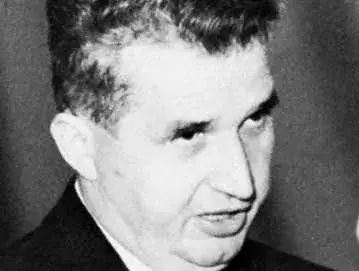
Nicolae Ceaușescu’s regime in Romania is estimated to be responsible for the deaths of tens of thousands of people. This includes those who perished due to the harsh conditions in prisons and labor camps, political executions, and the widespread poverty and deprivation resulting from Ceaușescu’s oppressive policies. The exact number of deaths is difficult to determine, However, 60,000 people is the number used during his trial but the regime’s brutal repression and severe economic mismanagement led to significant suffering and loss of life.
Ceaușescu’s personality cult was extreme, with grandiose projects such as the Palace of the Parliament symbolizing his absolute power. His economic policies, particularly the drive to repay foreign debt, led to widespread poverty and deprivation. The harsh living conditions and brutal repression eventually led to his overthrow and execution in 1989.
Mengistu Haile Mariam’s Ethiopia
Mengistu Haile Mariam led Ethiopia under a Marxist-Leninist regime from 1977 to 1991. His rule is most notorious for the Red Terror campaign, which sought to eliminate political opposition through mass killings, torture, and imprisonment.
Mengistu Haile Mariam’s regime in Ethiopia is estimated to be responsible for the deaths of between 500,000 to 2 million people. This includes deaths from the Red Terror campaign, political executions, forced labor, and the severe famine exacerbated by the regime’s policies. The exact number of victims is challenging to ascertain, but Mengistu’s brutal rule resulted in significant loss of life and suffering in Ethiopia.
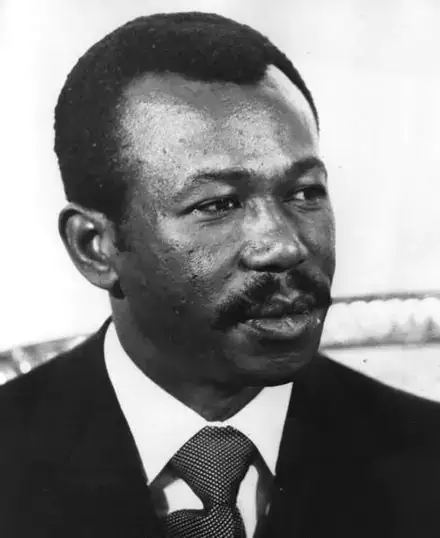
The campaign resulted in the deaths of tens of thousands of Ethiopians. Mengistu’s government nationalized land, collectivized agriculture, and pursued aggressive socialist policies, leading to economic decline and famine. The state-controlled media propagated the regime’s ideology, while the military and security services suppressed dissent. Mengistu’s rule left a legacy of violence, economic hardship, and deep societal divisions.
François Duvalier’s Haiti
François “Papa Doc” Duvalier ruled Haiti from 1957 to 1971, creating a totalitarian state characterized by a cult of personality, the use of a secret police force (the Tonton Macoute), and widespread human rights abuses. Duvalier exploited Voodoo beliefs to bolster his image as a powerful and mystical leader.
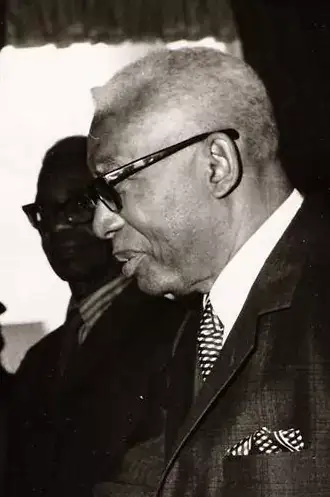
François “Papa Doc” Duvalier’s regime in Haiti is estimated to be responsible for the deaths of between 30,000 to 60,000 people. This includes political executions, disappearances, and deaths due to the actions of his paramilitary force, the Tonton Macoute, as well as the severe repression and human rights abuses that characterized his rule from 1957 to 1971.
The Tonton Macoute terrorized the population, enforcing Duvalier’s rule through violence and intimidation. His regime suppressed political opposition, controlled the media, and used propaganda to maintain his grip on power. Duvalier’s economic policies led to widespread poverty and underdevelopment, while his repressive tactics stifled any form of dissent. His son, Jean-Claude “Baby Doc” Duvalier, continued his authoritarian legacy until his ouster in 1986.
Current Totalitarianism in the United States?
While the United States is fundamentally a democratic republic, concerns about elements of totalitarianism have been raised in various contexts. Issues like mass surveillance, the power of large corporations, and political polarization are sometimes cited as threats to democratic freedoms. However, these concerns do not equate to the systemic and pervasive control seen in totalitarian regimes.
How Countries Can Be Both Authoritarian and Totalitarian
Defining the Overlap
While authoritarianism and totalitarianism share similarities, totalitarianism represents an extreme form of authoritarianism. An authoritarian regime may not seek to control every aspect of life but still maintain significant political repression and limited personal freedoms.
Examples
Russia
Under Vladimir Putin, Russia exhibits both authoritarian and totalitarian characteristics. The regime maintains strict political control, suppresses dissent, and uses propaganda to manipulate public opinion. However, some personal and economic freedoms remain, differentiating it from pure totalitarianism.
China
Modern China under the Chinese Communist Party exhibits both authoritarian and totalitarian traits. While there is a degree of economic freedom, political dissent is harshly suppressed, and the state exerts significant control over media and information.
The Devastating Legacy of Seven Totalitarian Leaders
Seven men—Adolf Hitler, Joseph Stalin, Mao Zedong, Enver Hoxha, Nicolae Ceaușescu, Mengistu Haile Mariam, and François “Papa Doc” Duvalier—were collectively responsible for the deaths of approximately 100 million people throughout the 20th century.
Their regimes, characterized by extreme totalitarian control, ruthless political purges, widespread famine, forced labor, and systematic persecution, left a trail of unimaginable suffering and loss.
Hitler’s genocidal policies led to the deaths of 17 million people, Stalin’s reign caused 20 to 25 million deaths, and Mao’s policies resulted in 40 to 80 million fatalities. Hoxha’s brutal rule in Albania accounted for up to 25,000 deaths, Ceaușescu’s regime led to tens of thousands of deaths, Mengistu’s violent rule in Ethiopia caused up to 2 million deaths, and Duvalier’s dictatorship in Haiti was responsible for up to 60,000 deaths.
These leaders’ quests for absolute power and ideological purity brought about some of the darkest chapters in human history.
Conclusion
The dynamics of totalitarianism involve a complex interplay of psychological, social, and economic factors. Totalitarian dictators rely on fear, propaganda, and control of resources to maintain their grip on power. Historical examples like Nazi Germany, Stalinist Russia, and Maoist China provide stark illustrations of these dynamics in action. Understanding these mechanisms is crucial for recognizing and resisting the emergence of totalitarian tendencies in contemporary societies. How many more people must die to satisfy the ego of those who want absolute control and power?
Frequently Asked Questions
What are the main characteristics of totalitarian regimes?
Totalitarian regimes are marked by absolute power, ideological monopoly, controlled economy, use of terror and violence, and extensive propaganda and censorship.
How do totalitarian rulers maintain power?
Totalitarian rulers maintain power through fear and repression, propaganda, economic dependency, and social rewards for compliance.
Can totalitarianism exist in democratic countries?
While democratic countries can exhibit authoritarian tendencies, true totalitarianism involves pervasive state control over all aspects of life, which is not present in democratic systems.
What are some historical examples of totalitarian regimes?
Historical examples of totalitarian regimes include Nazi Germany under Hitler, the Soviet Union under Stalin, and Maoist China.
What is the difference between authoritarianism and totalitarianism?
Authoritarianism involves significant political repression and limited personal freedoms, while totalitarianism seeks to control every aspect of public and private life.
Are there any totalitarian regimes today?
North Korea is a contemporary example of a totalitarian regime, with strict state control over all aspects of life and severe punishment for dissent.
External References
Historical Examples:
- The Nazi Germany regime: History.com
- Stalin’s Soviet Union: Library of Congress
- Maoist China: History Channel
- Enver Hoxha’s Albania: BBC History
- Nicolae Ceaușescu’s Romania: Britannica
- Mengistu Haile Mariam’s Ethiopia: Africa Is a Country
- François Duvalier’s Haiti: The New York Times
Current Events:
Educational Resources:
- Totalitarianism: Stanford Encyclopedia of Philosophy
- Authoritarianism vs. Totalitarianism: Encyclopaedia Britannica
External Resources:
The sources are reputable academic publications, historical websites, and recognized news organizations. Ensuring we bring you factual and reliable content.

After all, what a great site and informative posts, I will upload inbound link – bookmark this web site? Regards, Reader.